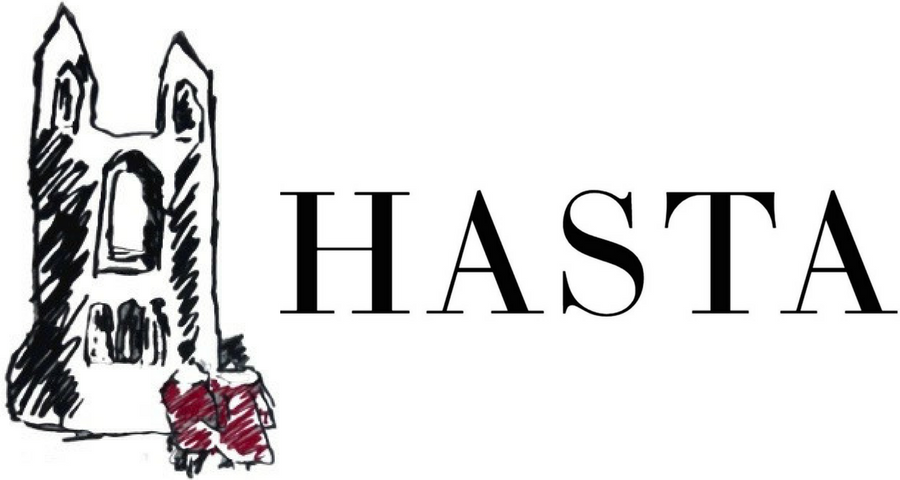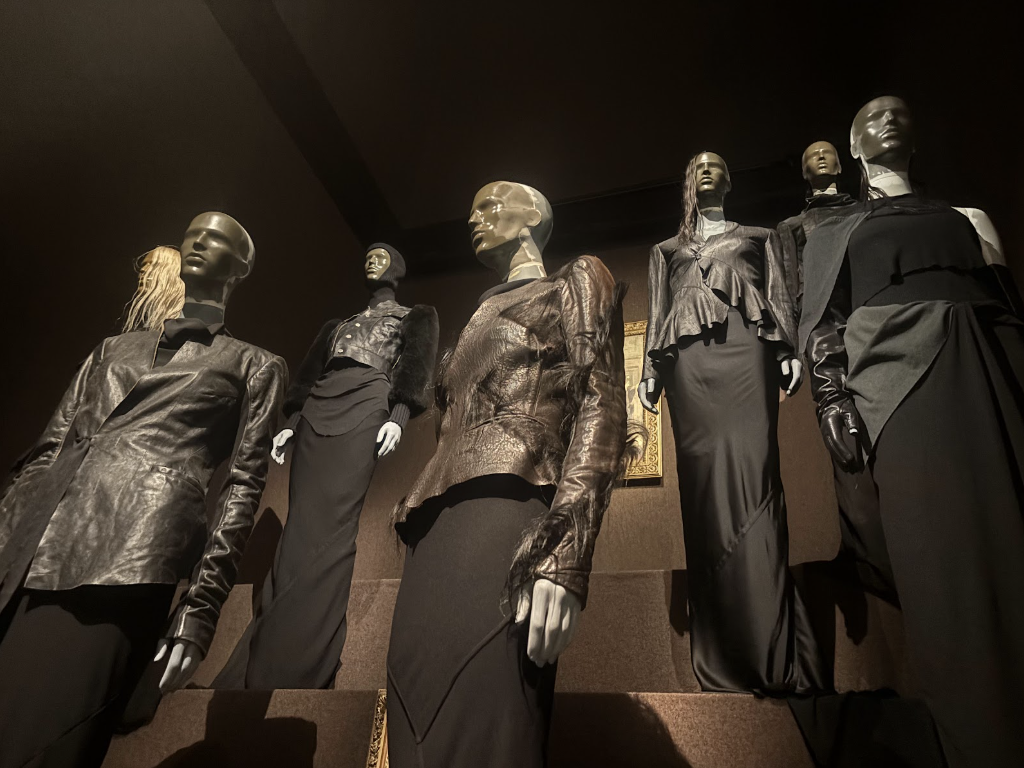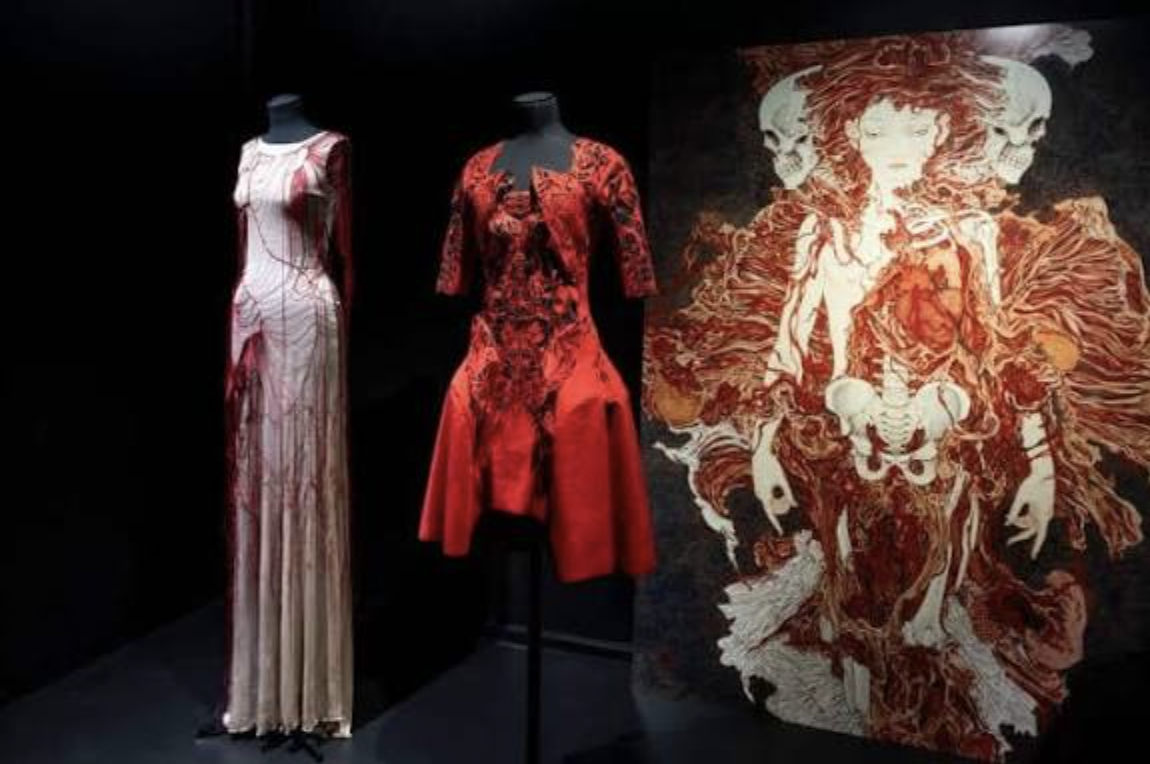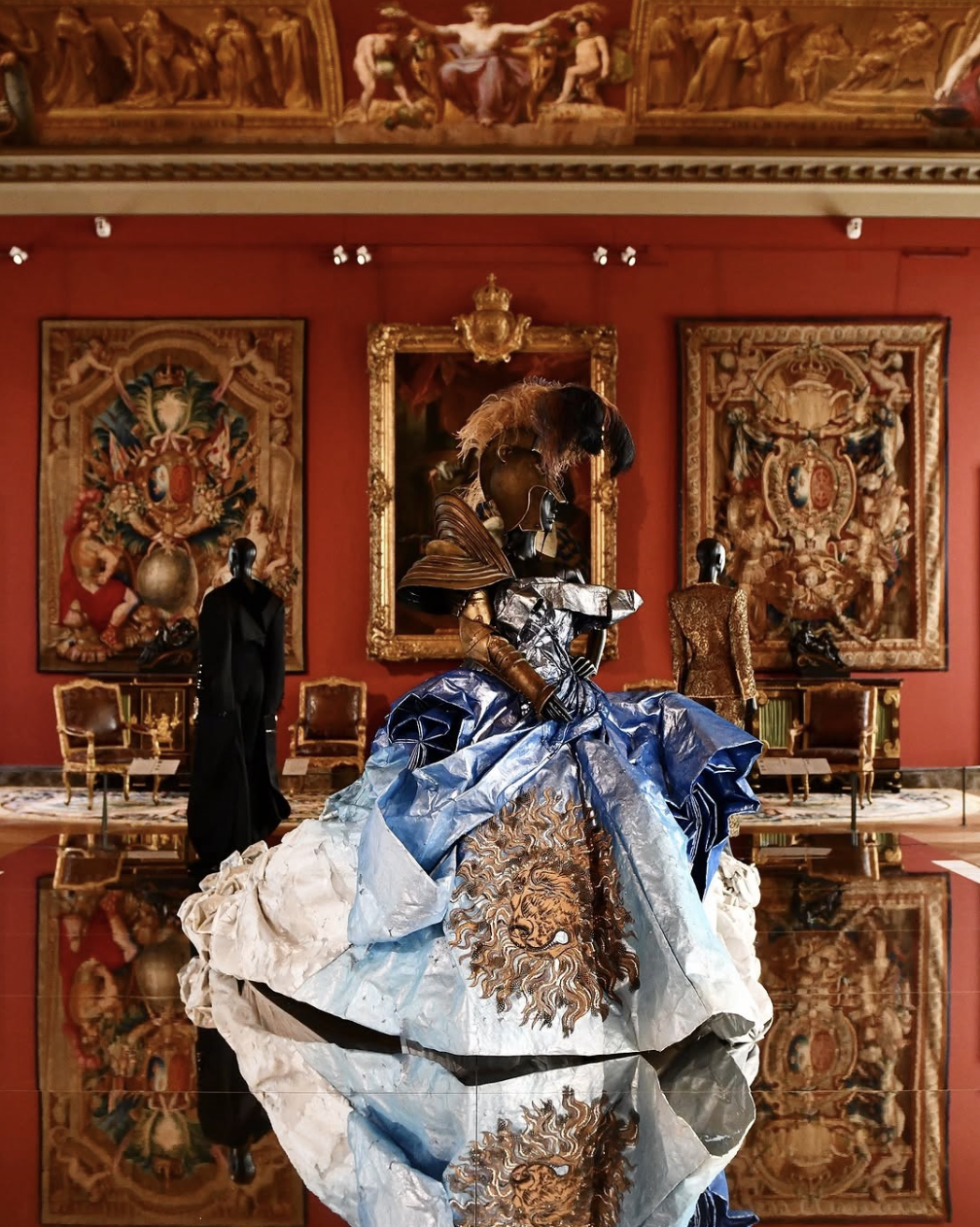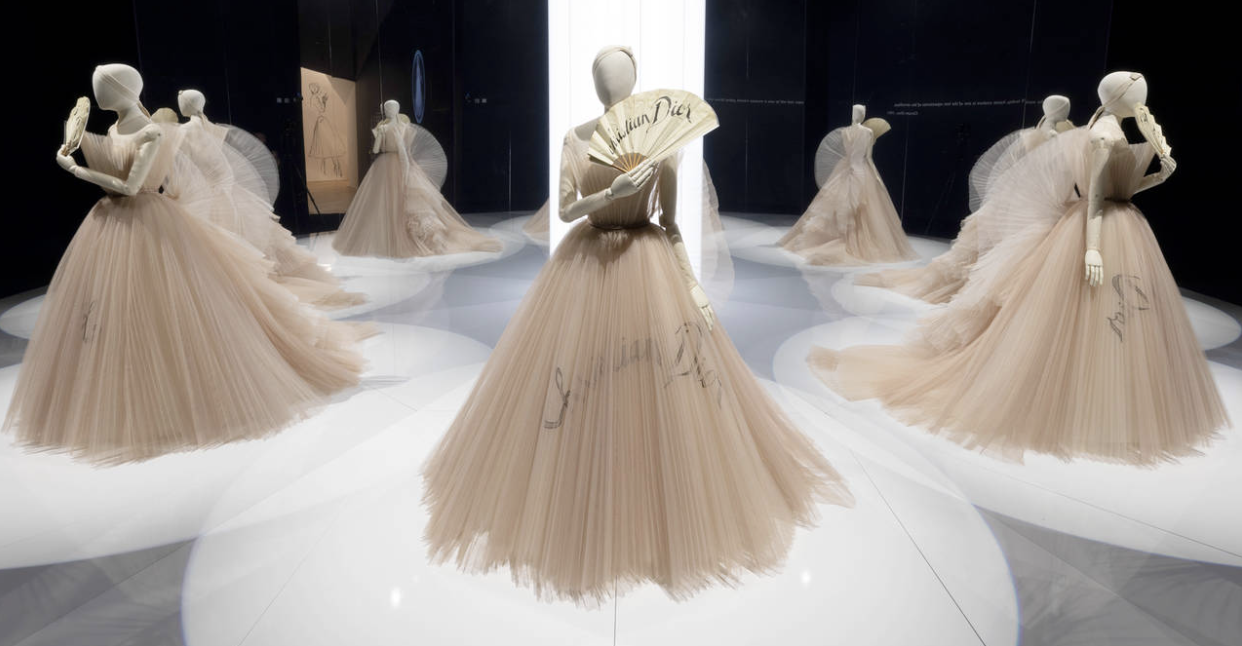The Rise of Fashion Exhibitions in Paris: Crossing the Bridge Between Fashion as a Historical Artefact, Art, or a Commercial Object
By Alix Ramillon
Fashion has widespread popular appeal. How do we define it in today’s world - is it a historical artefact, art, or a commercial object? Its status has oftentimes been overlooked. How has it impacted current museum standards, explaining both the museums’ and the fashion houses’ perspectives? Is the value of fashion about presentation rather than the item, or instead the object of art? If the first popular fashion history exhibition was held a century ago at the International Exhibition or Exposition Universelle in Paris, 1900, the recent explosion of fashion exhibitions in Paris, from the Louvre to Palais Galliera, testifies to an innovative and profitable approach to curating exhibitions for new audiences and new forms of exhibiting. This article will delve into my current experiences visiting exhibitions in Paris and how they have become adaptive and revolutionary due to the interplays between AI and art, as well as the impact of the recession on the fragile fashion market.
Traditionally speaking, fashion was not considered high art. Even as an example of the decorative or applied arts, fashionable dress was considered inferior to tapestry, furniture, or ceramics. Therefore, ‘the hostility towards fashion in the museum, especially the art museum, replicates the traditionally low status of fashion within academia, but it is also related to […] conflicts about ‘fashion’ as an aspect of popular culture.’ In fact, fashion exhibitions didn’t appear suddenly in the 1970s or 1980s; they have a foundation in earlier museum practices such as ethnographic, decorative arts, and industrial arts displays. In the mid-twentieth century, curators attempted to make dress exhibitions more scientific towards a ‘new objectivity,’ categorising garments as material culture rather than art. Fashion exhibitions currently look more at intervisuality, where displaying fashion as art enables it to speak the language of art while retaining its own accent. If the earliest dress displays were didactic rather than aesthetic, what later became known as fashion exhibitions were ‘originally moral and industrial displays intended to elevate taste.’
Setting a fashion exhibition in a prestigious museum attests to cultural relevance, thus disproving the prejudice that fashion is fleeting and ultimately irrelevant to the construction of art history. As emphasised by Anderson, this ‘takes the form of fashion being tolerated as a form of ‘entertainment’ which will ‘pull the crowds,’ with no acknowledgment of the serious contribution it also makes to the educational role of the museum.’ Museums sometimes treat fashion exhibitions as mere entertainment to attract visitors, ignoring fashion's significant contribution to their educational mission. This establishes a conflict where fashion is reduced to a crowd-pleasing spectacle, rather than being recognised for its value in teaching history, cultural context, and the culture of materials through meaningful displays.
Rick Owens, Fashion on the Move, 2025.
Image courtesy of Alix Ramilton.
Rick Owens displays augmented reality installations where visitors can view historical sportswear and modern athleisure overlays through an app. This app utilises motion-capture to simulate how garments respond to bodily movement, as the name Fashion on the Move (2025) suggests. His lifeless mannequin becomes a performer and transforms into tableaux vivants, where the mise en scène itself enhances other art influences, such as theatre, and highlights their centrality in fashion exhibitions. He explores techniques such as custom-moulded supports and posture reconstruction to restore the garment’s lived silhouette. As emphasised by Petrov, ‘The mannequin mediates between the absent body of the past and the present viewer’s imagination.’
Yiqing Yin, Air and Dreams, 2025.
Image courtesy of the Cité de la Dentelle.
Alongside this, the exhibition Air and Dreams (2025) at the Cité de la Dentelle et de la Mode presented Yiqing Yin’s work. Yiqing Yin created the costumes for the theatrical ballet Tristan and Iseult and clothes worn by perfumers’ campaigns.
Haute Couture is not commercially profitable. In today’s society of material abundance, customers are looking for identity rather than the product itself. This is perceivable through houses like LVMH, which promote customisation of high-end pieces, elevating them to the level of high art. The museum can attribute value to an object of heritage through glamour. This highlights the audience's interest in understanding the Haute Couture manufacturing processes, which are highly confidential; the ateliers are strictly guarded and secretive to preserve their exclusivity and protect trade secrets from competitors.
Issey Miyake, Making Things, 1998.
Image courtesy of the Groupie.
For instance, Miyake’s exhibition Making Things (1998) pushes forward how ‘the couturier is in conflict with the market economy, which is interested only in the readily available product. Exhibited at the Foundation Cartier, it showcases the innovative approach of the IM MEN line (2021). Inspired by the concept of a ‘piece of cloth,’ it highlights the paradox of clothing materials and the process of couture being considered simplistic. Miyake’s resurgence in Western markets is indicative of the recession core, whereby very minimalistic pieces, with good quality and texture, reignite the customer’s desire for simple yet elevated fashion. It is therefore essential to distinguish the couture garment from the mass-produced one, and to elevate the designer’s craft to the high status that is allocated to art.’
In France, the fashion and textile sector revenue dropped by approximately 1.5% year-on-year in January 2025 compared to 2024, testifying to a luxury fatigue, price sensitivity, and brand reputation risk. If retail sales have seen declines, there are occasional months with small increases; the overall trend is flat or slightly negative. Given those pressures, fashion exhibitions make sense as strategic responses for various actors, such as fashion houses or cultural institutions. Since exhibitions act as brand experiences, they reinforce heritage, design credibility, and luxury status. Opening an exhibition or curating displays has costs, but compared to the ongoing expenses of producing and marketing fashion collections amid inflation, design, and supply chain disruptions, it seems to be a more stable investment for fashion houses acting as art collectors.
A silk ball gown designed by John Galliano for Dior in 2006 is located in the centre of a room dedicated to Louis XIV, beside gilded ornaments and portraits of the Sun King at the Louvre.
Image courtesy of the Straits Time.
The fashion industry operates on a seasonal Western fashion system, with which museums align their display schedules, and is closely tied to fundraising openings and the social season in the art world. It is also important to stress fashion’s structural advantages in displaying contemporary fashion. Many historical garments can be in fragile condition; therefore, adhering to strict conservation guidelines makes it harder to display them. Curators and cultural managers see fashion exhibitions as a stable source of revenue and audience fidelity. That is why exhibitions such as Louvre Couture (2025) are pairing haute couture with art and antiquities, presenting fashion alongside historical decorative arts. This curatorial approach reframes garments as cultural artefacts and broadens interpretive perspectives, appealing to both art and fashion audiences.
This testifies to a shift towards an experience economy and the integration of digital design tools, machine learning, and 3D visualization into curatorial practice for the arts. It also shows how art is directly impacted by immersive and digital exhibition designs, merging the continuity of past and present curatorial practices. Since AI helps preserve fragile garments, simulate wear without damage, and model restoration digitally, it enables museums to display the intangible senses, such as movement or touch, that traditional vitrines can’t reenact. Algorithms are actually very deeply intertwined with detection patterns in embroidery, silhouette, or textile origin. AI also assists in digital conservation by predicting which fabrics are most vulnerable to decay. Both Palais Galliera and Paris Musées have collaborated with Google Arts & Culture since 2021 to digitise high-resolution images of garments and create online curated AI tours. This makes the distinction between fashion as a historical artefact, art, and a commercial object more fragile, as visitors can explore garments through similarity search. This AI-driven discovery model makes fashion history globally accessible.
Christian Dior, Couturier du Rêve, 2017.
Image courtesy of Les Arts Decoratifs.
The very popular Christian Dior: Couturier du Rêve (2017) used digital projection to make Dior sketches ‘come alive’ across gallery walls. AI-based image-recognition tools were sorted into archive visuals and arranged into immersive room sequences.. More recently, the Louvre Couture in 2025 also presented an AI-curated segment called Algorithmic Elegance, in which a neural network trained on centuries of Louvre paintings generated virtual garments, blending art and couture. The public could therefore get a sense of how AI interpreted the silhouettes of Ingres or Fragonard into modern couture shapes.
Bibliography
Anderson, Fiona. 2000. “Museums as Fashion Media.” In Fashion Cultures: Theories, Explorations, and Analysis, edited by Stella Bruzzi and Pamela Church Gibson, 371–389. London: Routledge.
Petrov, Ivan. 2021. Fashion, History, Museums: Inventing the Display of Dress. London: Bloomsbury Academic.
Steele, Valerie. 1998. “A Museum of Fashion Is More than a Clothes-Bag.” Fashion Theory 2 (4): 327–335.
Wallenberg, Louise. 2020. “Art, Life, and the Fashion Museum: For a More Solidarian Exhibition Practice.” Fashion and Textiles 7 (1): 1–14.
